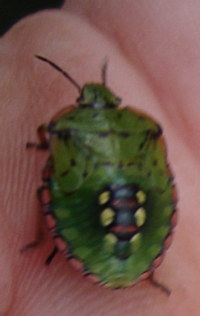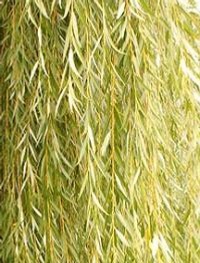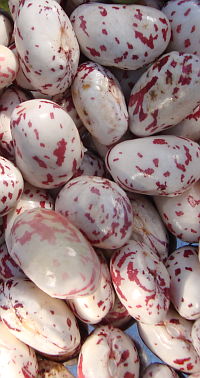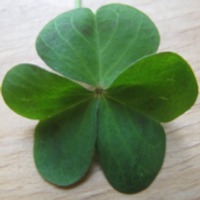
Don’t get your Jerusalems confused with your globes. The Jerusalem artichoke is a brown-coloured, knobbly, white-fleshed tuber root vegetable, much like a yam. It has quite a nutty flavour. Cook them like you would any other root vegetable.
Jerusalem artichokes grow in almost any soil type or shade condition, but do best in a light but rich soil. Pick your patch with these things in mind – 1 – the tops grow to about 2 metres and can easily shade out other plants – 2 – any small amount of the root left in the ground will produce another plan. Best time to harvest is in autumn when the sunflower-like heads die off.
Nutritionally, these tubers rock with plenty of potassium, iron, vitamin C, protein, niacin, thiamine and fibre. They contain about 57 calories per half cup. Margaret Lynch provides really good information on preparing Jerusalem artichokes for eating.
The tubers are also a wonderful source of biomass for ethanol production, good source of fructose and a great forage crop for livestock, especially pigs.
Jerusalem artichoke links and recipes after the jump. Read more

 Last December I noticed a lot of what looked like little black ladybugs on my beans. I did lots of research, asked lots of questions but without handy visual references I couldn’t work out what they were. Dear internet content people, please supply more pictures! (Are there any entomologists out there who can please tell me exactly what this thing is?)
Last December I noticed a lot of what looked like little black ladybugs on my beans. I did lots of research, asked lots of questions but without handy visual references I couldn’t work out what they were. Dear internet content people, please supply more pictures! (Are there any entomologists out there who can please tell me exactly what this thing is?) I’ve just found a great article from an old Soil and Health magazine about willow water, and thought I just had to share. I don’t take a lot of cuttings from plants because quite frankly they’re tricky and they just haven’t worked well for me in the past. I might just have to give this one a try though – especially as it won’t cost me a thing.
I’ve just found a great article from an old Soil and Health magazine about willow water, and thought I just had to share. I don’t take a lot of cuttings from plants because quite frankly they’re tricky and they just haven’t worked well for me in the past. I might just have to give this one a try though – especially as it won’t cost me a thing. Grow your own food! But be patient – this is how long it will take. The chart looks at how long you can expect to wait for your vegetables to grow from seed. These are estimated times – climate, soil conditions, water supply, different cultivars, farming methods can all give different results.
Grow your own food! But be patient – this is how long it will take. The chart looks at how long you can expect to wait for your vegetables to grow from seed. These are estimated times – climate, soil conditions, water supply, different cultivars, farming methods can all give different results. If clover starts growing in your vege patch, I’ve been told it’s a sure sign of nitrogen deficiency. I’m picking that’s right given the space that used to be occupied by my under-achieving heavy-feeding brussels sprouts now has a lovely patch of clover, coming up through the pea straw. I’ll be adding lots more organic matter into this little spot before I plant anything else here. In the meantime, it just lies sleeping under it’s little blanket of mulch.
If clover starts growing in your vege patch, I’ve been told it’s a sure sign of nitrogen deficiency. I’m picking that’s right given the space that used to be occupied by my under-achieving heavy-feeding brussels sprouts now has a lovely patch of clover, coming up through the pea straw. I’ll be adding lots more organic matter into this little spot before I plant anything else here. In the meantime, it just lies sleeping under it’s little blanket of mulch. So I was wondering why the zucchini plants growing in one bed were half the size of the ones growing in another. The answer became apparent as the zucchs set. The soil in one bed is lacking in calcium. The signs being a nasty little problem called Blossom End Rot.
So I was wondering why the zucchini plants growing in one bed were half the size of the ones growing in another. The answer became apparent as the zucchs set. The soil in one bed is lacking in calcium. The signs being a nasty little problem called Blossom End Rot. One of my favourite garden chores is watering. There is something incredibly therapeutic about coming home from a hard day in the office to go out and take water to your thirsty little plants. And they look so pretty when they’re all wet and shimmery.
One of my favourite garden chores is watering. There is something incredibly therapeutic about coming home from a hard day in the office to go out and take water to your thirsty little plants. And they look so pretty when they’re all wet and shimmery.
